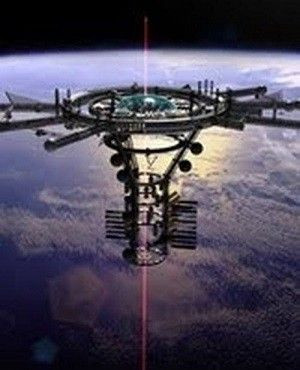Unique Characteristics of the Space Elevator Announced by Obayashi Corporation That Would Travel 96,000 Kilometers to Space by 2050
The Elevator is Safer and Inexpensive Compared to Rocket-Propelled Space shuttles

Famous Japanese construction company Obayashi Corporation had announced two years back that they were planning on building a space elevator that would be completed by 2050. The elevator would replace rockets. The unique features of the elevator are:
World's first space elevator
This is the world's first space elevator. In an interview with the Australian Broadcasting Corporation this month, the company revealed that the elevator would not just be functioning by 2050; it would in fact travel 96,000 kilo metres into space.
Ultra Tall
In 2012 the company had announced that the elevator would be ultra tall and would be 22,000 miles high. It is powered by magnetic linear motors and can be used to carry people and cargo to space on a seven day journey. This would be the world's first elevator.
Carbon Nanotechnology
The company explained that to have an elevator that would travel so high in space would be possible due to carbon nanotechnology. As a strong cable would be required to lift the weight and it needs to be long as well. Yoji Ishikawa, research and development manager of Obayashi said that tensile strength is almost a hundred times stronger than steel cable, reported ABC news. He explained that currently they are not able to make a long cable but by 2030 they would be able to do it. Inhabit.com reported that that with the technology like the with genetically-modified spider silk, it could be possible to construct a super strong cable by then.
Would cost one fourth of the costs required for travel from rocket-propelled space shuttles
The project is not only novel and fascinating but CNet explains that if it would be made possible to journey through space in the elevator then it would financially benefit the world and it would be a lot safer to travel. Austrian Tribune reported that the elevator would operate smoothly and would be inexpensive when compared to the amount it costs to travel by rocket-propelled space shuttles. "Cargo usually costs around $22,000 per kilogram via shuttle, by using Obayashi's space elevator, the cost would be closer to $200," the company said. The cost of the elevator is $9.1 million.
Minimize fuel requirement
The space elevator would make it possible to launch small rockets from stations, this again would minimize the amount of fuel required to cut across the Earth's gravitational pull.
Would involve international organizations
Several universities in Japan are contributing to the project. A team at Kanagawa University specializes in the development and analysis of the problems associated with robotic cars. They are right now assisting the company in the mechanism required to make the elevator ascend to different altitudes. Pointing towards the requirement of International assistance Ishikawa stated that they alone could not make this possible and the project needs to garner international support. An international organization's assistance would make the project even bigger, he said.




















